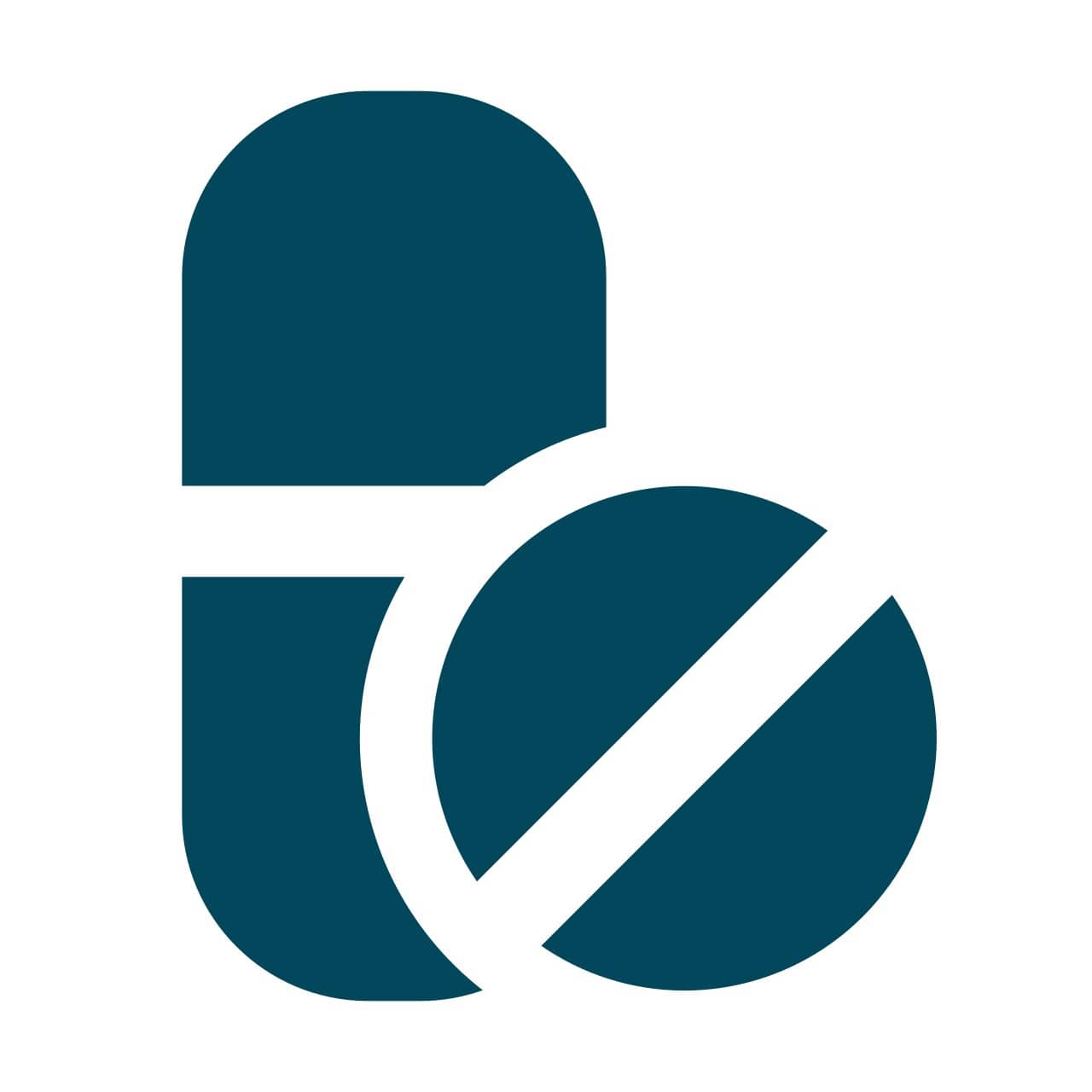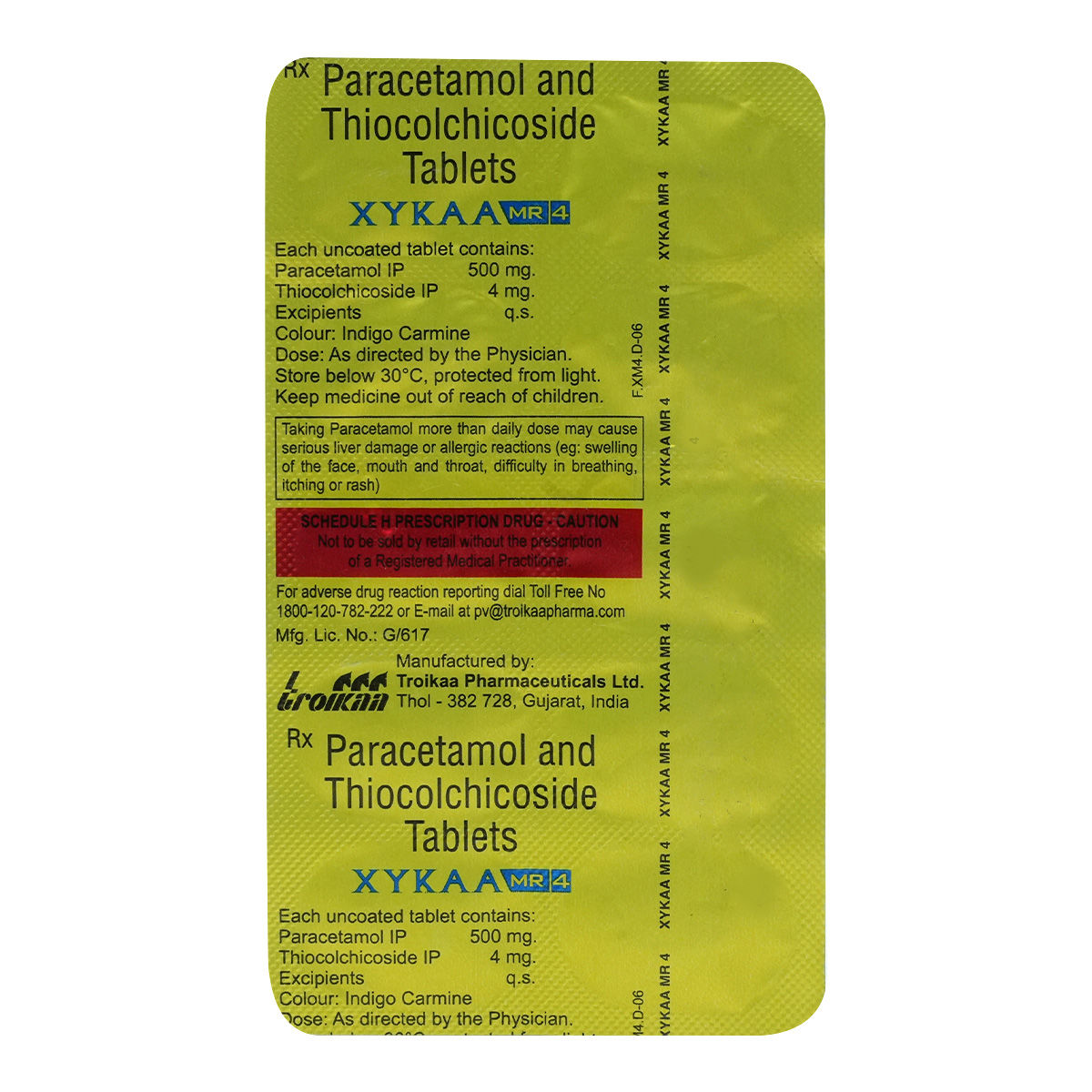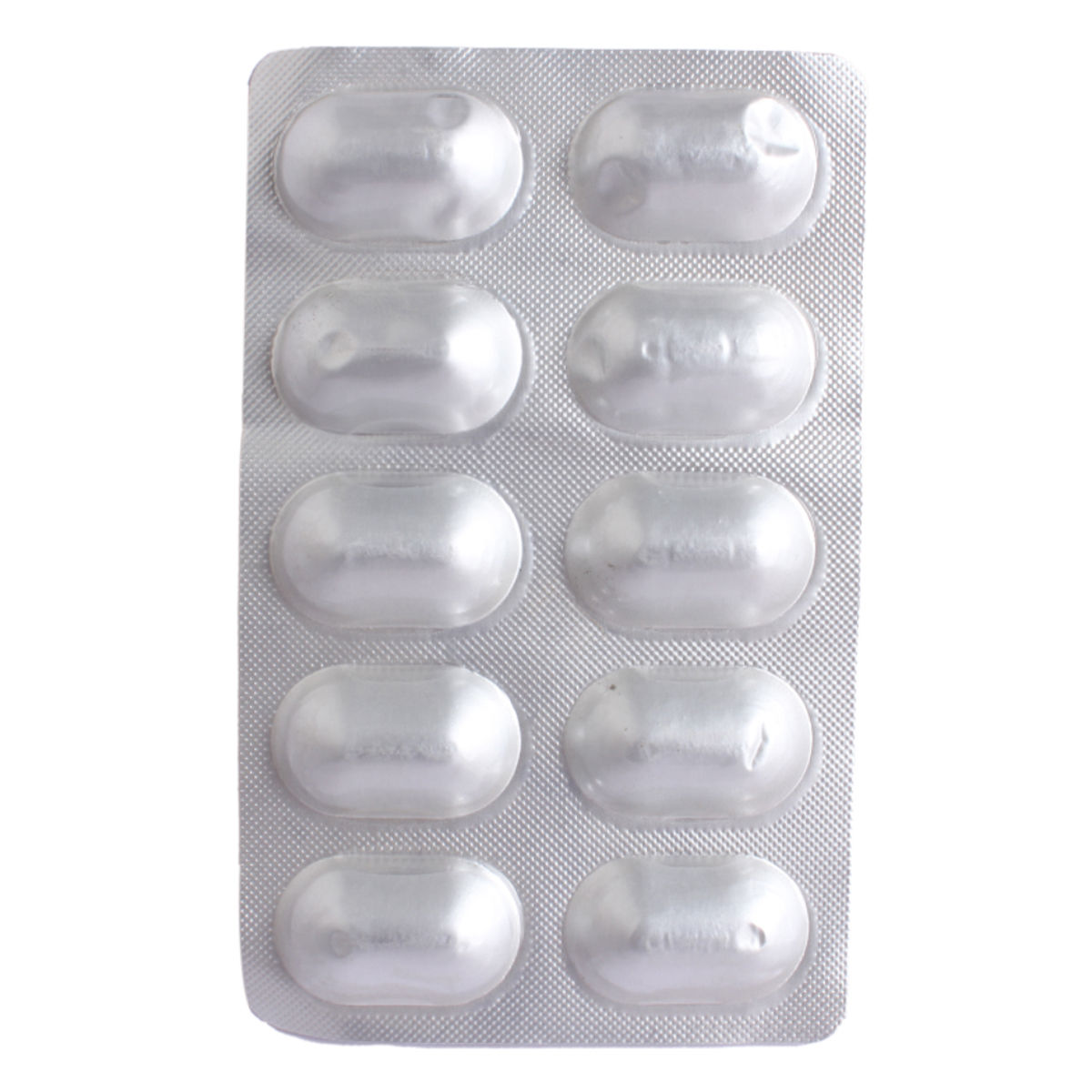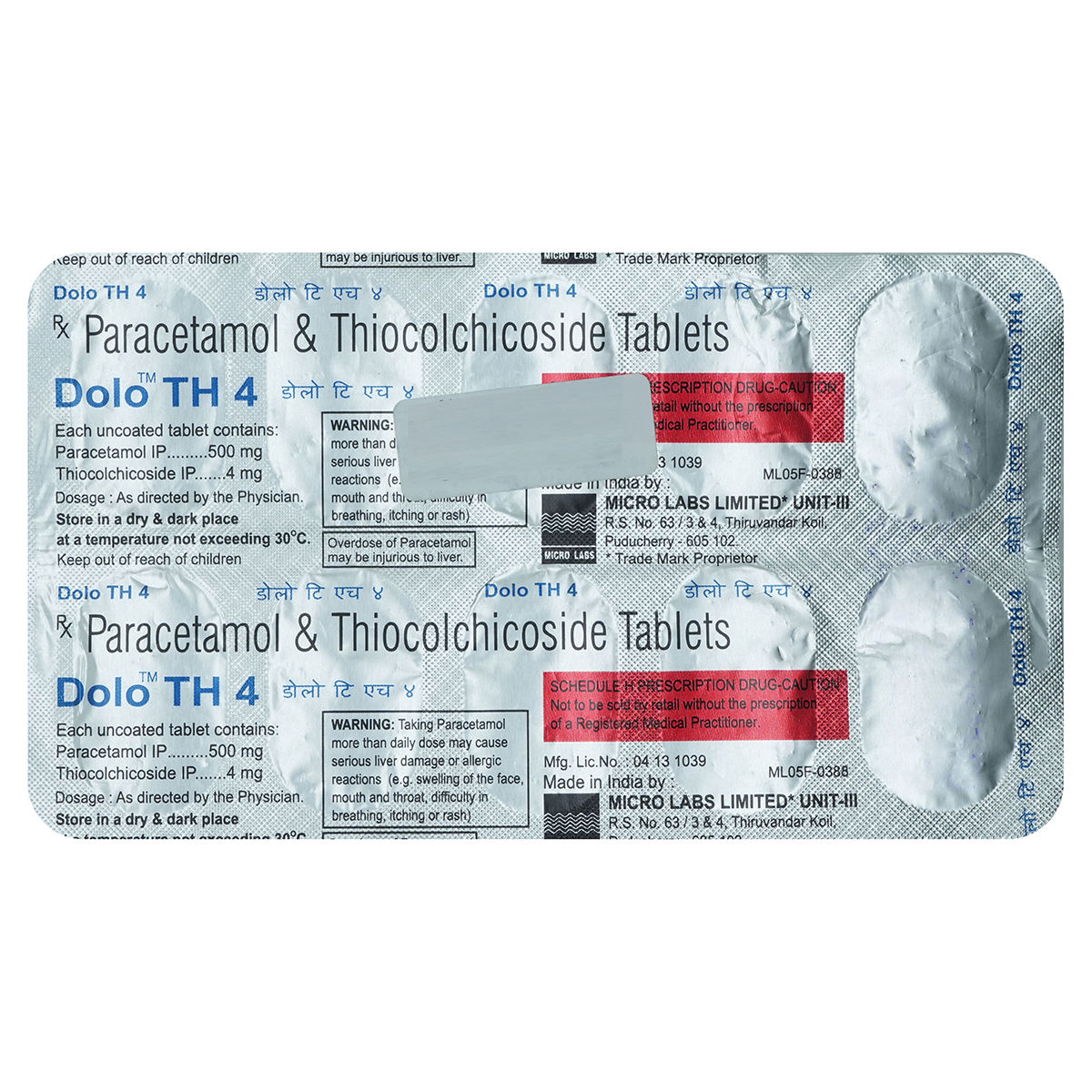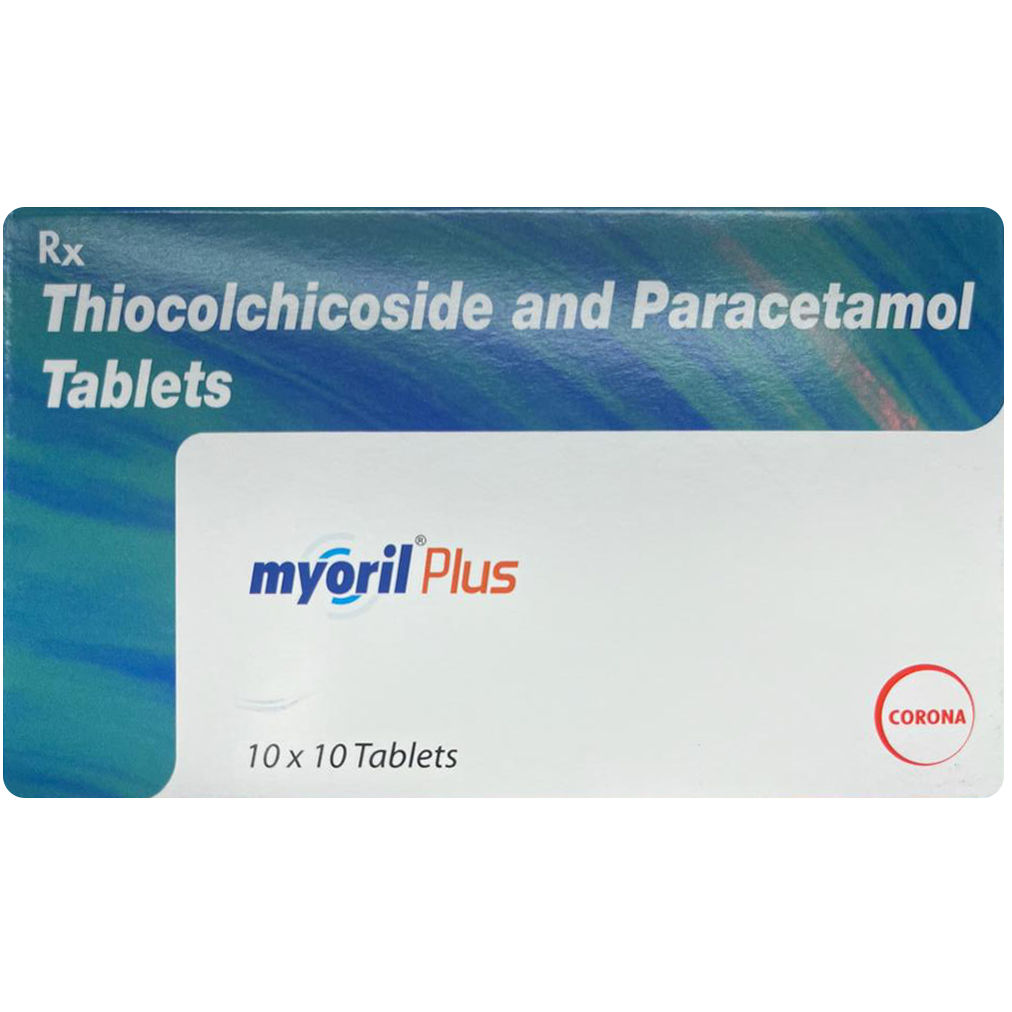Paracetamol+thiocolchicoside
About Paracetamol+thiocolchicoside
Paracetamol+thiocolchicoside is a combination medication used to reduce and relieve orthopaedic, traumatic, and rheumatologic disorders. It helps relieve muscle spasms (painful muscular contractions) associated with degenerative vertebral disorders, vertebral static problems, dorsal pain, low back pain, and torticollis (neck muscle contractions).
Paracetamol+thiocolchicoside is a combination of two drugs: Paracetamol (mild analgesic and antipyretic) and Thiocolchicoside (muscle relaxant). Paracetamol is an analgesic (relieves pain) and antipyretic (reduces fever) that works by inhibiting certain chemical messengers in the brain known as prostaglandins responsible for pain, inflammation and fever. Thiocolchicoside is a muscle relaxant that works on the centres of the spinal cord and brain. This helps relieve muscle stiffness and improves muscle movements, thereby relieves pain due to muscle spasms.
Take Paracetamol+thiocolchicoside as prescribed. Your doctor will advise you on how often you take your tablets based on your medical condition. In some cases, you may experience diarrhoea, drowsiness or stomach pain. Most of these side effects of Paracetamol+thiocolchicoside do not require medical attention and gradually resolve over time. However, if the side effects persist or worsen, please consult your doctor.
If you are allergic to Paracetamol+thiocolchicoside or any other medicines, please tell your doctor. Paracetamol+thiocolchicoside is not recommended for children below 16 years of age. Avoid taking Paracetamol+thiocolchicoside if you are pregnant as it may cause harm to the foetus. Paracetamol+thiocolchicoside is excreted in breast milk. Therefore, Paracetamol+thiocolchicoside is contraindicated in breastfeeding women as it may cause adverse effects on the baby. Inform your doctor if you experience abdominal pain or discomfort, dark urine, itching, fever, weakness, or yellowing of skin and eyes while taking Paracetamol+thiocolchicoside as it indicates liver problems. Do not consume alcohol with Paracetamol+thiocolchicoside as it may increase the risk of liver damage. If you have galactose intolerance, Lapp lactase deficiency, glucose-galactose malabsorption, G-6-PD deficiency (a hereditary condition resulting in low red blood cell counts), fits (epilepsy), muscular hypotonia (decreased muscle tone), flaccid paresis (loose and floppy limbs), kidney or liver diseases, inform your doctor before taking Paracetamol+thiocolchicoside.
Uses of Paracetamol+thiocolchicoside
Medicinal Benefits
Paracetamol+thiocolchicoside is a combination of two drugs, namely: Paracetamol and Thiocolchicoside used to treat pain due to muscle spasms. Paracetamol is an analgesic (relieves pain) and antipyretic (reduces fever) that works by inhibiting the production of certain chemical messengers in the brain known as prostaglandins responsible for pain and fever. Thiocolchicoside is a muscle relaxant that works on the centers of the spinal cord and brain. This helps relieve muscle stiffness and improves muscle movements, thereby relieves pain due to muscle spasms.
Directions for Use
Storage
Side Effects of Paracetamol+thiocolchicoside
- Diarrhoea
- Drowsiness
- Stomach pain
- Fainting and drowsiness
- Nausea and Vomiting
- Dry mouth
- Headache
- Anemia
Drug Warnings
If you are allergic to Paracetamol+thiocolchicoside or any other medicines, please tell your doctor. Paracetamol+thiocolchicoside is not recommended for children below 16 years of age. Avoid taking Paracetamol+thiocolchicoside if you are pregnant as it may cause harm to the fetus. Paracetamol+thiocolchicoside is excreted in breast milk, so Paracetamol+thiocolchicoside is contraindicated in breastfeeding women as it may cause adverse effects in the baby. Inform your doctor if you experience abdominal pain or discomfort, dark urine, itching, fever, weakness, yellowing of skin and eyes while taking Paracetamol+thiocolchicoside as it indicates liver problems. Do not consume alcohol with Paracetamol+thiocolchicoside as it may increase the risk of liver damage and gastrointestinal bleeding. If you have galactose intolerance, Lapp lactase deficiency, glucose-galactose malabsorption, G-6-PD deficiency (a hereditary condition resulting in low red blood cell counts), epilepsy (fits), muscular hypotonia (decreased muscle tone), flaccid paresis (loose and floppy limbs), kidney or liver diseases, inform your doctor before taking Paracetamol+thiocolchicoside.
Drug Interactions
Drug-Drug Interaction: Paracetamol+thiocolchicoside may have interaction with blood thinners (warfarin), anti-sickness drugs (domperidone, metoclopramide), lipid-lowering drugs (cholestyramine), antibiotics (chloramphenicol), antacid (ranitidine).
Drug- Food Interaction: Avoid foods rich in carbohydrates, pectin including jellies, cabbage, Brussels sprouts and broccoli as Paracetamol+thiocolchicoside may interact with these foods. Also, avoid intake of alcohol with Paracetamol+thiocolchicoside as it may increase the risk of liver damage.
Drug-Disease Interaction: If you have galactose intolerance, Lapp lactase deficiency, glucose-galactose malabsorption, G-6-PD deficiency (a hereditary condition resulting in low red blood cell counts), fits, muscular hypotonia (decreased muscle tone), flaccid paresis (loose and floppy limbs), kidney or liver diseases, inform your doctor before taking Paracetamol+thiocolchicoside.
Drug-Drug Interactions Checker List:
Safety Advice

Alcohol
unsafeYou are recommended to avoid consumption of alcohol with Paracetamol+thiocolchicoside as it may increase the risk of liver damage.

Pregnancy
unsafeParacetamol+thiocolchicoside is not recommended for pregnant women as it may cause harm to the foetus. However, please consult your doctor if you are pregnant.

Breast Feeding
unsafeAvoid breastfeeding while taking Paracetamol+thiocolchicoside as it may be excreted in breast milk and cause adverse effects in the baby. However, please consult a doctor if you are breastfeeding.

Driving
cautionParacetamol+thiocolchicoside may cause drowsiness in some people. Therefore, avoid driving if you feel drowsy after taking Paracetamol+thiocolchicoside.

Liver
cautionTake Paracetamol+thiocolchicoside with caution, especially if you have a history of Liver diseases/conditions. The dose may be adjusted by your doctor as required.

Kidney
cautionTake Paracetamol+thiocolchicoside with caution, especially if you have a history of Kidney diseases/conditions. The dose may be adjusted by your doctor as required.

Children
unsafeParacetamol+thiocolchicoside is not recommended for children as the safety and effectiveness were not established.
Habit Forming
Diet & Lifestyle Advise
- Regular exercise helps in muscle stretching so that they are less likely to spasm, tear and sprain. Mild exercises such as jogging and walking are helpful for muscle stretching.
- Avoid wearing tight-fitting clothes, instead, wear loose garments.
- Rest well, and get plenty of sleep for at least 8 hours.
- To avoid developing pressure sores, change your position at least every two hours.
- Hot or cold therapy can help treat muscle spasms. Apply an ice pack or hot-pack to the muscle for 15-20 minutes.
Special Advise
Paracetamol+thiocolchicoside may give false-positive results for urine glucose tests. Therefore, inform your doctor or lab technician that you are taking Paracetamol+thiocolchicoside before undergoing any laboratory tests.
Patients Concern
Disease/Condition Glossary
Pain is a symptom triggered by the nervous system, causing uncomfortable sensations in the body. Muscle spasm is the sudden involuntary contractions of the muscle, which can be painful and uncomfortable. When the nerve impulses that control the muscle movements are damaged or interrupted, it could lead to muscle spasms. Symptoms include muscle tightness, joint stiffness, unusual posture, difficulty in moving, pain in affected muscles and joints. Fatigue (weakness), stress, extreme heat or cold, infection, and tight clothing can trigger muscle spasms. Muscle relaxants and exercise can treat muscle spasms. Muscle relaxants sedate the muscle and help in inhibiting painful contractions. Whereas, exercise helps in muscle stretching to be less likely to spasm, tear and sprain.
FAQs
Paracetamol+thiocolchicoside is used to reduce and relieve orthopaedic, traumatic, and rheumatologic disorders. It helps relieve muscle spasms (painful muscular contractions) associated with degenerative vertebral disorders, vertebral static problems, dorsal pain, low back pain, and torticollis (neck muscle contractions).
Paracetamol+thiocolchicoside contains Paracetamol and Thiocolchicoside. Paracetamol is an analgesic (relieves pain) and antipyretic (reduces fever) that works by inhibiting the production of certain chemical messengers in the brain known as prostaglandins responsible for pain and fever. Thiocolchicoside is a skeletal muscle relaxant that works on the centers of the spinal cord and brain. This helps relieve muscle stiffness and improves muscle movements, thereby relieves pain due to muscle spasms.
Paracetamol+thiocolchicoside may affect sperm cells and thereby causes problems with male fertility. Therefore, please consult your doctor before taking Paracetamol+thiocolchicoside.
Paracetamol+thiocolchicoside may cause diarrhoea as a side effect. It is not necessary for everyone taking Paracetamol+thiocolchicoside to experience this side effect. However, if the condition persists or worsens, please consult a doctor.
You are not recommended to take Paracetamol+thiocolchicoside with warfarin (blood thinner) as co-administration of these two medicines may increase bleeding risk. So you are advised to contact your doctor so that the dose may be adjusted appropriately to use safely.
Paracetamol+thiocolchicoside may trigger episodes of epilepsy (fits), especially in patients who are at risk for fits or those suffering from fits. Therefore, please inform your doctor if you have a history of fits before taking Paracetamol+thiocolchicoside.
You are recommended to use Paracetamol+thiocolchicoside for as long as your doctor has prescribed it. However, if the symptoms persist even after using Paracetamol+thiocolchicoside for 7 days, stop taking Paracetamol+thiocolchicoside and consult a doctor.
Though Paracetamol+thiocolchicoside contains paracetamol it is not used to reduce fever. Paracetamol+thiocolchicoside is used to relieve musculoskeletal pain and spasms.
Paracetamol+thiocolchicoside may cause side effects like diarrhoea, drowsiness or stomach pain. Most of these side effects of Paracetamol+thiocolchicoside do not require medical attention and gradually resolve over time. However, if the side effects persist or worsen, please consult your doctor.
Paracetamol+thiocolchicoside should be swallowed as a whole with water; do not crush or chew it.
Paracetamol+thiocolchicoside may cause drowsiness in some people. Therefore, avoid driving if you feel drowsy after taking Paracetamol+thiocolchicoside. You are recommended to avoid consumption of alcohol with Paracetamol+thiocolchicoside as it may increase the risk of liver damage.
Paracetamol+thiocolchicoside is not recommended for children as the safety and effectiveness were not established.

